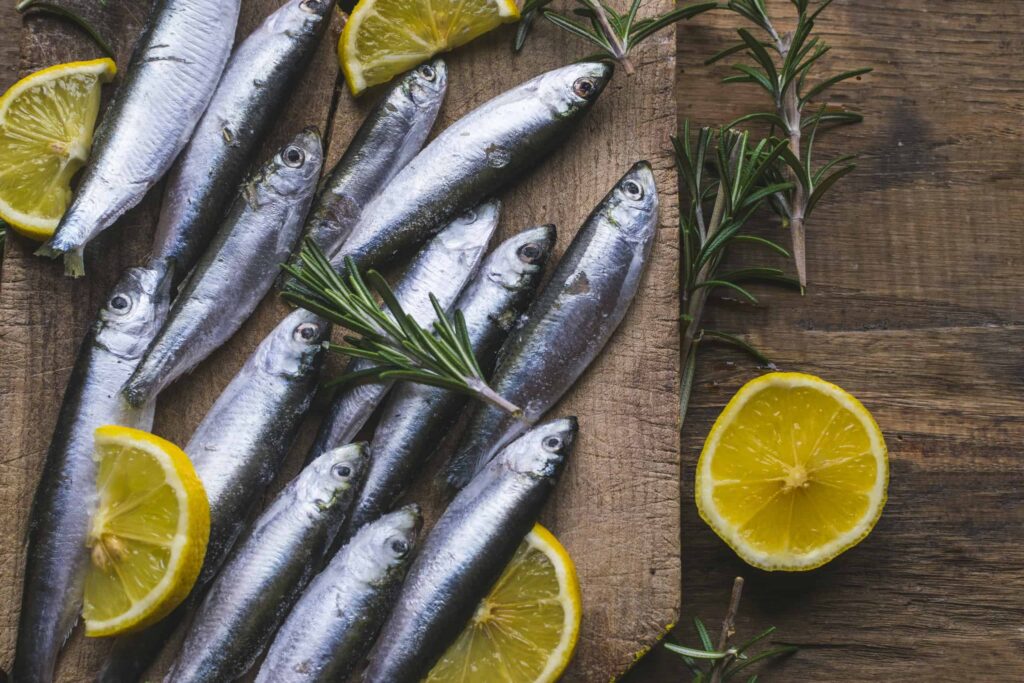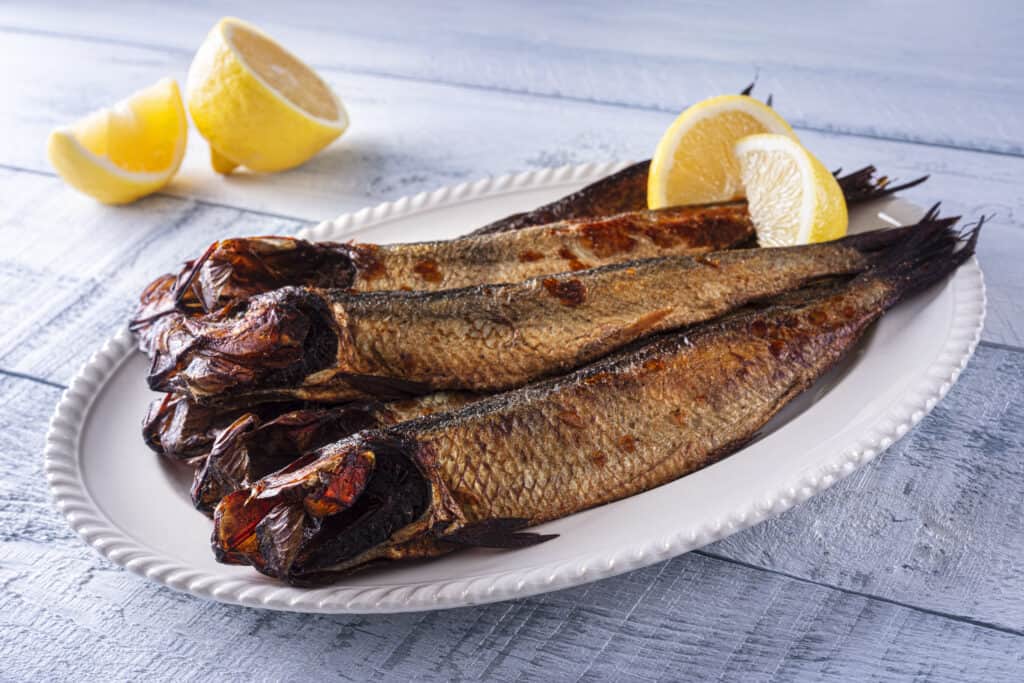Every so often, the terminology of a prepared food dish and the species from which it is derived cause confusion. That’s certainly the case with kippers, herring, and sardines. We’ve previously shown how sardines and herring are unique, but the latter are often marketed as sardines. Yet, when we add the term “kippers” to the mix, we have to explore the very specific meaning of the word in the larger context of the fish. Let’s consider kippers vs. sardines and see how they are different from one another.
Comparing a Kippers vs. Sardines

A-Z-Animals.com
The Key Differences Between Kippers vs. Sardines
The greatest differences between kippers and sardines can be found in their phylogenetic families and the way they’re served as food. Kippers are herring, and they are mainly from the Clupeidae family, specifically the genus Clupea. Sardines are also from the family Clupeidae, but they stem from other genera, including Sardina, Sardinops, and Sardinella.
While the term “sardines” refers to a small fish that is served canned, smoked, or whole, the term “kippers” has a more specific connotation. Specifically, kippers are herring that are prepared using the kippering technique, resulting in a smoked, broiled, or grilled fish.
These are some of the most obvious differences between the two types of fish, but they are hardly the only ones. Let’s continue to explore how these creatures are unique.
Kippers vs. Sardines: Uses

iStock.com/Ralers
The most important difference between sardines and kippers is how they are used. Kippers are not a species of fish. Instead, that term refers to how fish are prepared, especially herring, a fish species. Kippering is a process where a fish is split down the middle, cleaned out, salted, and then smoked. The fish may then be additionally broiled, grilled, or sauteed before serving to a person.
The term “sardines” refers to an actual species of fish. However, several species of fish are considered sardines, including some herring. This adds to the confusion surrounding herring and sardines. It’s not unusual to find herring that are sold as sardines when they are small.
Still, sardines are often canned, served whole and fresh, baked into pies, or even smoked and then served. In some cases, the difference in how the fish is prepared may be the easiest way to differentiate the fish due to the close relationship between sardines and herring.
Kippers vs. Sardines: Phylogenetic Families
Kippers, being herring, come from the families Clupeidae and Chirocentridae. The type genus of herring is Clupea, especially Clupea harengus and Clupea pallasii. Herring are closely related to sardines.
Sardines come from the family Clupeidae. Yet, they come from different genera, such as Sardina, Dussumieria, Escualosa, Sardinops, and Sardinella. Since the fish come from the same phylogenetic family and have many similar traits, it’s easy to confuse a herring and a sardine of the same size.
Kippers vs. Sardines: Size
Generally speaking, kippers and sardines are similar in size, but sardines have a higher average weight. Although kippers can grow between 1 and 2.2 pounds, they average about half a pound in weight and grow about 14 inches in length despite having a maximum length of 23.6 inches.
Meanwhile, sardines weigh anywhere between 0.2 and 4.5 pounds, and they often grow up to 10 to 14 inches with a maximum of 15.6 inches in length. The small size difference between these two creatures makes it hard to differentiate the fish. Another element that complicates the matter of telling the fish apart is their similar morphology.
Kippers vs. Sardines: Morphology

iStock.com/Fudio
Considering the most common members of their species, the Atlantic herring and the Atlantic sardine, it’s clear that these two fish are very similar in terms of their looks.
Both creatures are small fish with elongated bodies, silvery color to their scales, a forked tail, two ventral fins, and a single dorsal fin, and bluish colors on their backs with a lighter underside.
However, different species of the two types of fish have unique qualities that make them easier to differentiate. Still, between size and looks, it would be hard to tell apart a herring or sardine served after kippering.
Kippers vs. Sardines: Diet
Kippers, or herring, consume zooplankton, marine worms, krill, phytoplankton, and other creatures. Meanwhile, sardines eat similar fare as they consume zooplankton, phytoplankton, crustacean eggs, decapods, and fish eggs. Both fish are found in a variety of waters throughout the world, where they eat some of the smallest creatures in the water.
All in all, the differences between kippers and sardines are as hard to parse as those between herring and sardines. The most meaningful difference is found in how the fish are prepared for human consumption. In this case, the process of kippering results in a very specific type of food dish. Meanwhile, sardines are more frequently canned after a simple smoking and steaming process.
Up Next:
- Sardines vs. Tuna: What Are The Differences?
- Sprats vs. Sardines: What Are The Differences?
- Sardines vs Anchovies: What’s the Difference?
The post Kippers vs. Sardines: How Are They Different? appeared first on AZ Animals.
from Animal News, Facts, Rankings, and More! - AZ Animals https://ift.tt/OAzd8Ev